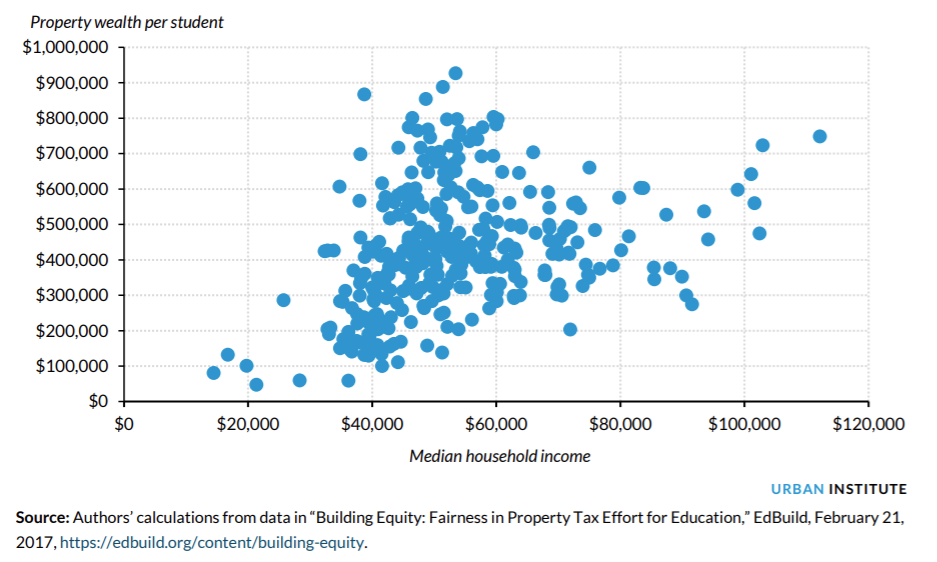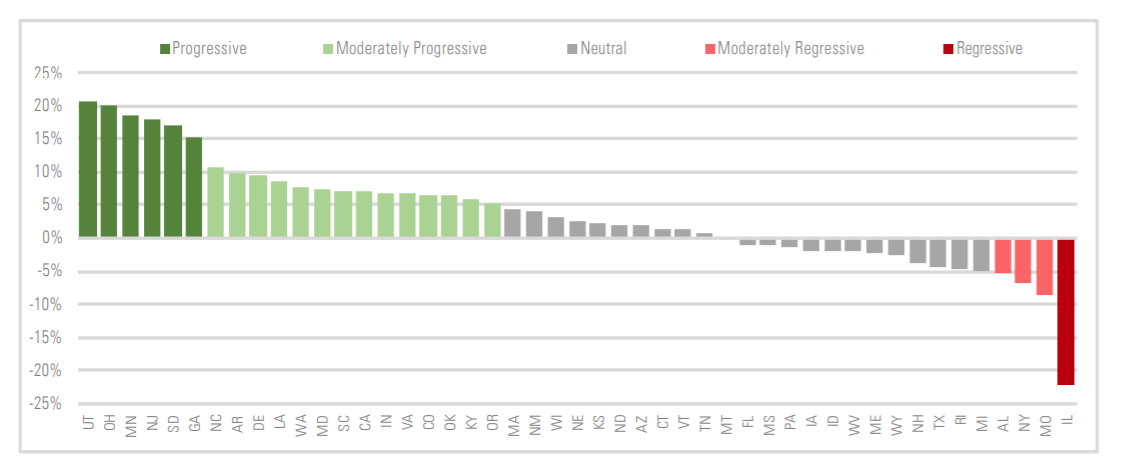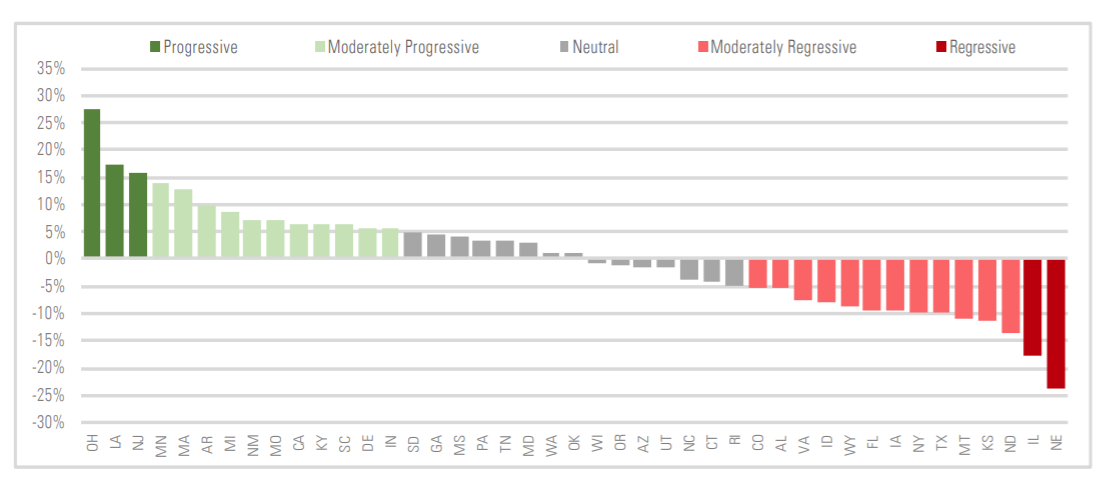Introduction
The main aim of public schools is to allow students with different backgrounds and economic opportunities to receive the same level of education. However, in the United States today, the school funding drastically differs based on the state and the district due to financial policies and an unbalanced distribution of wealth among citizens. As a result, more economically disadvantaged students might get fewer educational opportunities than their peers. The current work demonstrates the inequities that are caused by differences in school funding, the consequences of this approach, and how the American system is compared to policies implemented in other countries.
Summary of the Problem
The core problem of public education in America concerns the difference in school funding based on the district and the state. The financial support is acquired from federal, state, and local sources; however, in reality, governmental money and property taxes comprise around 90% of income for public schools (Chingos & Blagg, 2017). The value of local funding has been steadily reduced since the beginning of the 20th century and is on par with state funding in the contemporary education system (Chingos & Blagg, 2017). Nevertheless, it is the government that decides on the funding formula and regulates the school funding. Therefore, in disadvantaged districts, education establishments get more finances from the state. In theory, this system should cover the gaps in the schooling system among students with different socio-economic backgrounds.
While such a system does seem to meet the requirements of compulsory education on paper, the reality drastically differs from the hypothesis. Good intentions of policymakers are frequently disturbed by the actual contrast between regions with the lowest and highest percentage of poverty. It implies that some districts cannot possibly allocate enough money to schools to meet the needs of the students. Furthermore, the situation is complicated by the fact that some districts are not necessarily disadvantaged as a whole but rather have distinct contrast among the property wealth of households. Chingos and Blagg provide the following chart demonstrating the difference between the money allocated for the student and property tax (6):

The graph implies that the funding policy based on the whole property wealth of the district would perform poorly to satisfy the needs of the socio-economic disadvantaged students. For the contemporary education system, the dependency between the property tax and school funding is one of the most pressing issues that needs to be resolved.
Recent Events
Recent findings note that the inequity between the socio-economically disadvantaged and regular students still exists. For instance, Morgan and Amerikaner report that the regions with the highest poverty rate provide 1000$ less per student compared to financially stable districts (2018). While most of the monetary deviance might be explained by the general property wealth, the funding formula in many states seems to be questionable. For instance, Morgan and Amerikaner demonstrate the gaps in state and local financing (6):

The graph shows the difference in how states regulate school funding based on the poverty level of the district. It demonstrates that, for instance, poor districts in Utah receive about 20% more monetary support that economically stable ones. Contrary to that, In Illinois, regions with the highest poverty rate get less school funding. It implies that the finances of a school in a poor district in Illinois are basically non-existent compared to rich regions in other states. This issue needs to be resolved and must be first addressed by the change of the funding formula.
Recent research has also shifted its focus from the economic situation of the district to the racial basis of school funding inequality. In the contemporary education system, regions with a high number of non-white students receive less monetary support than districts that accommodate the fewest (Morgan & Amerikaner, 2018). Since the main aim of public schooling is to deliver equal service to all students, this issue needs to be resolved. To provide evidence for this perspective, Morgan and Amerinaker provide the following chart (11):

The graph demonstrates the contrast in school funding between the districts that serve the highest and the lowest number of students of color. Prior research has found that non-white students generally start their education later than their white peers (Morgan & Amerikaner, 2018). That is exactly why they need more support in order for the education system to be functional. In general, the research demonstrates that half of the states in the country do not provide additional monetary support to economically disadvantaged districts.
Overall, the recent findings show that the American education system is flawed and in a need of restructure. The primary issues concern the contrast in school funding based on the dependency of property tax (that reflects the general estate wealth of the district) and the state monetary support. Furthermore, the districts that accommodate a high number of non-white students receive less assistance from the government as well. To address these issues, authorities need to adjust the funding formula so that students in need receive more financial support and are able to get the same level of education.
School Funding in Australia
The regulation of school funding in Australia is similar to the one implemented in the United States but has a few distinct differences. While states still do play a vital role in the financial aspect, the federal government has a much more profound impact on education. The central administration provides funds to all the three sectors of schooling in Australia: governmental, Catholic, and independent (Gerrard et al., 2017). The main concept is to accommodate every student with an equal opportunity for education, not necessarily an equal outcome. Therefore, the federal government supports not only public education but also private schools, and that is the primary difference from the American system. Nevertheless, Australian policy is also affected by the inequities in school funding. The research shows that the distinction between public and private sectors has become more relevant recently, and the amount of finances allocated to the schools differs correspondingly (Gerrard et al., 2017). It demonstrates that education is an extremely complicated subject and various approaches are necessary to organize a functional framework.
Conclusion
Summing up, the current research project demonstrates the inequities of the American education system and showcases the fundamental issues that need to be resolved. The dependency between the property tax and school funding frequently causes the inequity of academic opportunities among students. Furthermore, the issue is complicated by the unequal distribution of finances among districts based on the number of pupils of color in schools. To fix the problem, the education system needs to focus on providing more monetary support to students in need and adjust the funding policies.
References
Chingos, M. M., & Blagg, K. (2017). Making sense of state school funding policy. Web.
Gerrard, J., Savage, G. C., & O’Connor, K. (2017). Searching for the public: school funding and shifting meanings of “the public” in Australian education. Journal of Education Policy, 32(4), 503–519.
Morgan, I. & Amerikaner, A. (2018). Funding gaps: An analysis of school funding equity across the U. S. and within each state. Web.
